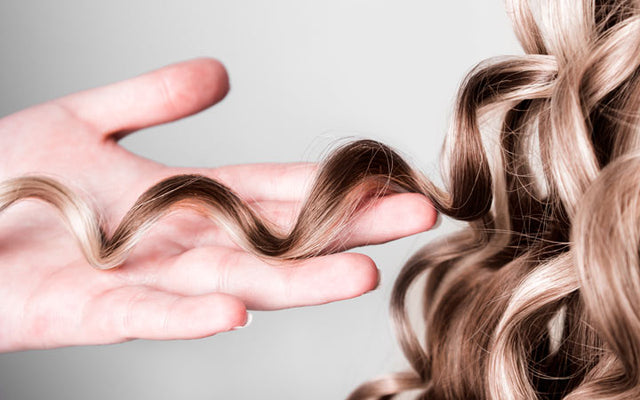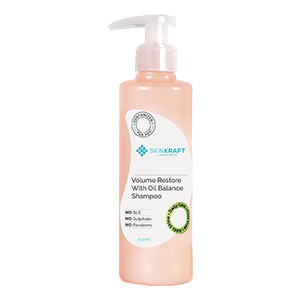Do you dream of sporting naturally soft, silky and healthy hair that easily absorbs and retains moisture? Then you should know and understand your hair porosity. It determines how you should care for your hair.
The porosity of your hair influences how easily moisture can pass in and out of the cuticle - the outermost layer of your hair. If you have high porosity hair, the cuticles are widely spaced. On the other hand, if you have low porosity hair, the cuticles are close together.
Keep reading to learn how you can conduct a hair porosity test, and how to treat low porosity hair.
Highlights:
What Is Low Porosity Hair?
Before we understand what low porosity hair is, let's take a closer look at the hair and its structure. Hair is composed of three layers - the cuticle, the cortex, and the medulla.
The cuticle is the outermost protective layer of the hair. It is composed of overlapping cells.
The cortex constitutes the body and pigment of your hair. It consists of fibrous proteins and keratin filaments.
The medulla forms the innermost layer of the hair. It consists of a thin core of transparent cells and air spaces.
When you have low porosity hair, the cuticles are packed densely with no spaces in between, which makes it difficult for water, oils, or conditioner molecules to penetrate inside. In short, the hair is not able to retain moisture.
On the other hand, when the hair is highly porous, there is a wide space between the cuticles. So, water and other product molecules can easily enter the hair and hydrate it.
How Can You Tell If You Have Low Porosity Hair?
When you wash your hair, do you find that water molecules roll up to form beads and then roll down your hair instead of getting absorbed? The most common characteristic of low porosity hair is finding it difficult to wet your hair.
Here are three methods to determine whether you have low porosity hair:
1. Sink or Float Test
You will need a few hair strands that have shed naturally and a cup of water at room temperature. If the water is too hot, the hair's porosity will change, and you won't get an accurate result.
Now, take the hair strands and drop them in the water. If you see the strands sink, it means the porosity is high because highly porous hair will absorb more water, become loaded, and sink.
If the hair has low porosity, no water molecule will be able to enter, making it water-resistant. Hence, the hair will float on top. If the hair is somewhere in between, then the hair has medium porosity and is good at retaining moisture.
2. Spray Bottle Test
This is an easy way to find out if you have low porosity hair. Take a portion of your hair and spray it with water. Now, observe. If you see the water drops bead up and roll down after some time, you know that you have low porosity hair.

3. Slide Test
You can also do a slide test to determine your hair's porosity. Take a strand of hair and slide your fingers up the shaft towards your scalp. If you find several bumps in between, you can conclude that you have high porosity hair.

Note:
Before performing the float test, shampoo your hair and dry it the way you do. Clean hair will give you the most accurate results.
Low Porosity Hair Care: Dos And Don'ts
When you have low porosity hair, you will find that most of your hair care products tend to sit on your hair's surface instead of being absorbed.
This doesn't mean you need to load your hair with more products. Instead, pick low porosity hair products that have the right formulation to penetrate your hair.
Here are some dos and don'ts for low porosity hair care.
DOs
1. Apply Hair Mask
You can treat low porosity hair by using a nourishing hair mask. Wet your hair, generously apply the mask, and work gently to ensure it penetrates into the hair. Hydrating deep conditioning treatments work well on low porosity hair.
2. Invest In A Hooded Steamer
Did you know that heat helps open up the cuticle? Steaming your hair while you have a hair mask on, will help the product absorb into your hair. Rinse it off with cold water to seal the cuticle.
3. Invest In Hydrating Hair Care Products
Low porosity hair needs a lot of love and attention. It's a good idea to invest in hair care products specially formulated to provide your hair with moisture and hydration.
DON’Ts
1. Don't Forget Shampoo
If you have low porosity hair, you will probably have more buildup because nothing gets absorbed. Include a clarifying shampoo to your hair cleansing routine, as its formula will help purify the scalp without stripping it of essential nutrients. Also, avoid alcohol-based products.
2. Don't Use Heavy Butter
Heavy butter and oils can build up quickly on low porosity hair. If you want to rejuvenate your hair in between wash days, go for lighter oils.
3. Don't Use Leave-In Conditioners
Stay away from traditional conditioners that are loaded with proteins to strengthen the hair. If you have low porosity hair, an overdose of protein may make your hair too stiff. Instead, choose lightweight conditioners that are easy to rinse off.
Wrapping Up
Because everyone's hair is different, their hair care can't be the same. Your hair porosity level can and should determine your hair care regimen, so it gets the right care and treatment. Your hair will thank you for it!
SkinKraft provides a customized hair care regimen for your unique needs.
Recommended Products
Was this Article helpful?
- Least helpful
- Most helpful











